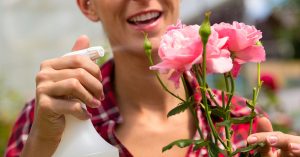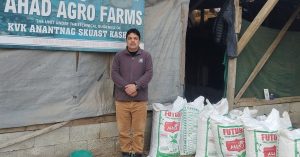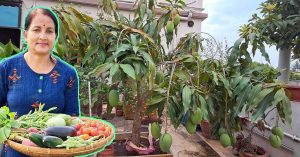Zero Soil, Zero Pesticides: How a Farmer Grows Maize in His Cupboards
P Saravanan from Tamil Nadu uses hydroponics to grow maize fodder for his cattle. He has also found a way to stay away from pesticides and keep his produce healthy.
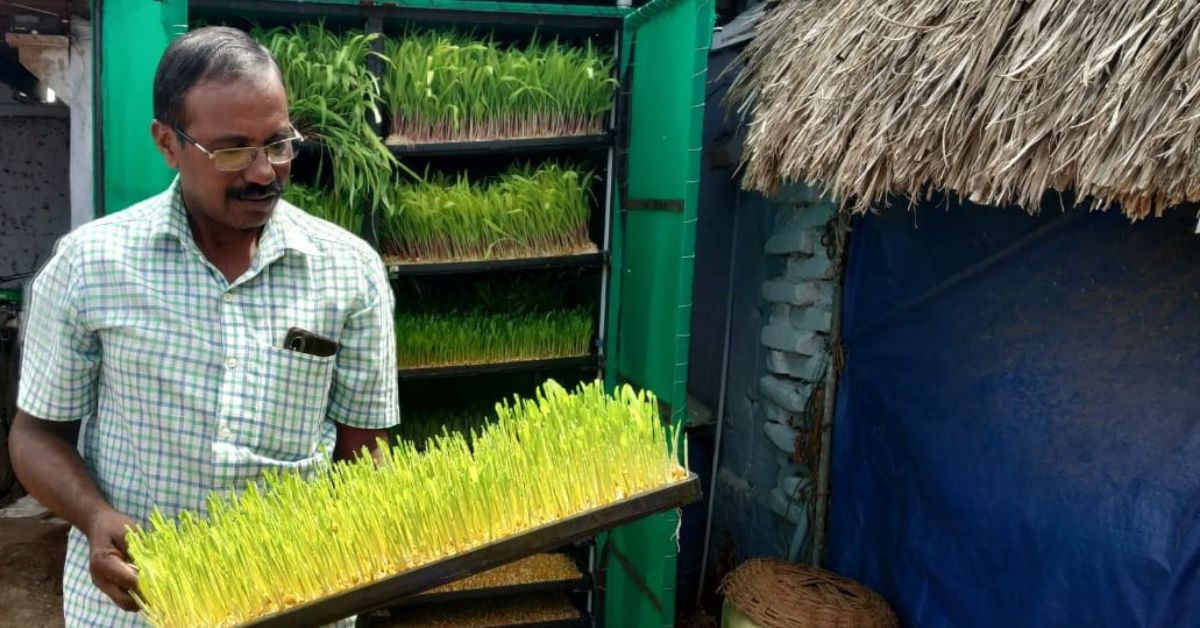
In 2008, P Saravanan’s turmeric crop was destroyed due to disease. This was the proverbial wake up call for the 58-year-old farmer, which prompted his switch to organic farming.
Born into a farming family, Saravanan realised that all he had to do to ensure a good crop — which benefitted him as well as the consumers — was to go back to his grandparents’ style of farming and abandon chemicals and pesticides.
The Namakkal resident soon realised the benefits of organic farming, and through different training at the local Krishi Vigyan Kendra (KVK), along with his innovations and home recipes to keep pests at bay, Saravanan soon became a certified organic farmer with many awards up his sleeve.
After all, he has been practising integrated farming for several decades now.
Initiated with avoiding chemicals completely, he soon moved towards drip irrigation, vermicompost, a biogas unit and hydroponics. Unable to cultivate enough fodder for his cattle, hydroponic maize production proved to be a gamechanger for him.
Since 2018, he has been using this method to grow fodder for his livestock. What’s unique about it is the fact that he grows it in his cupboard! He uses the soilless hydroponic method to grow maize fodder.
Then in 2018, he received the Haldhar Organic farmer award from the Indian Council of Agricultural Research along with the ‘Innovative farmer award’ from the Central government, among others.
So how did a farmer practising traditional farming in a village in Tamil Nadu move to organic methods and find success in them? Here’s his story.
An attempt to save soil
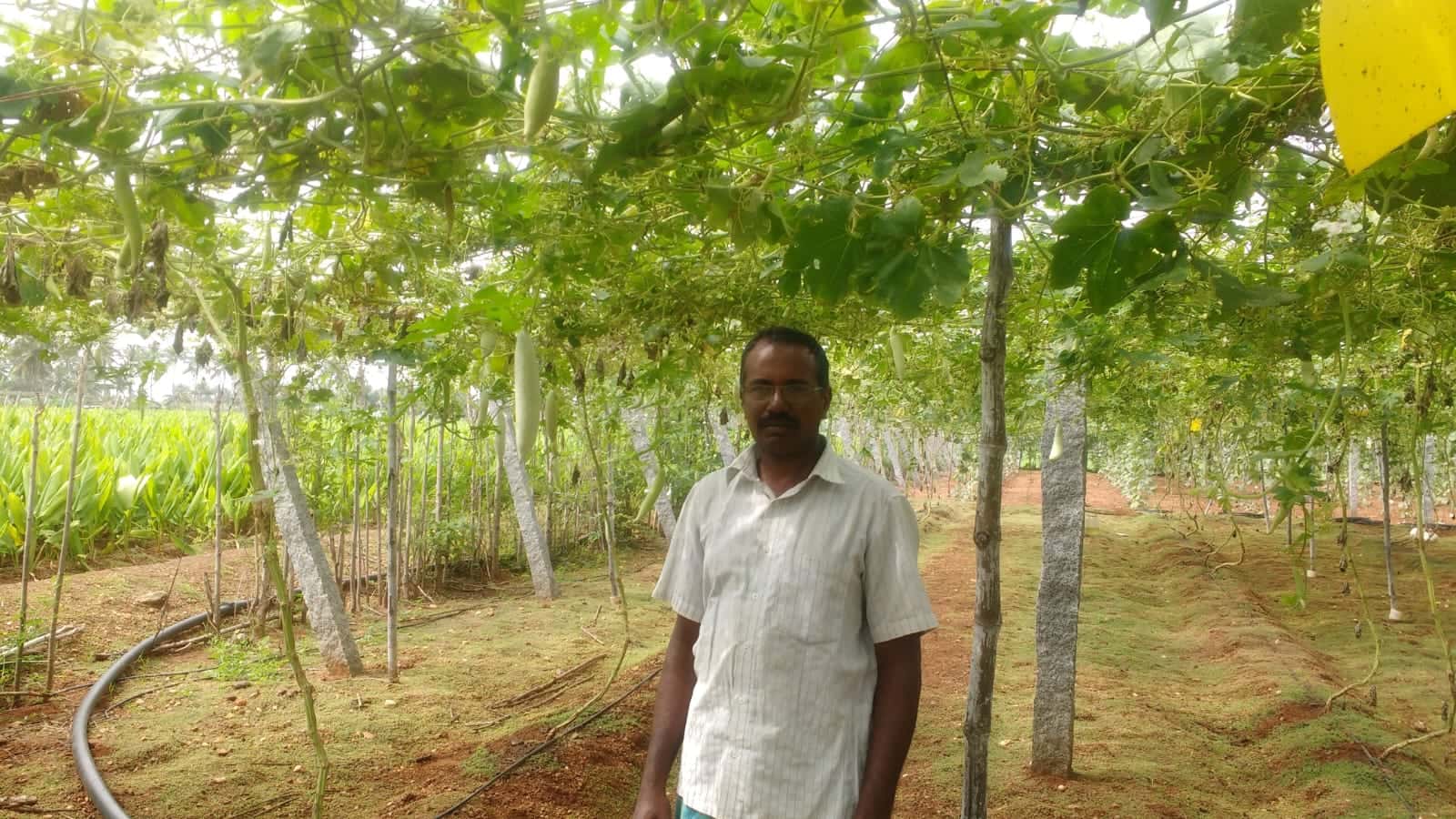
P Saravanan has been farming for over 40 years now in Ariyagoundampatti village, Namakkal, Tamil Nadu. While his grandparents practised organic methods of farming, his father introduced chemicals and pesticides, which Saravanan continued till 2006 as well.
The government introduced the micro-irrigation scheme in 2005-06, under which subsidies were provided for drip and sprinkler irrigation. Saravanan, an early adopter of many such new
schemes, decided to give drip irrigation a try.
“We used to face water scarcity, which made irrigation very difficult. Drip irrigation saves water and irrigates thrice the amount of land using the same water used by traditional methods,” Saravanan tells The Better India.
Since 2007, the farmer has moved to drip irrigation on his 6 acre and 36 cents (1 acre is 100 cents) land on which he cultivates turmeric, groundnuts, and vegetables. He also practises integrated farming, a sustainable agricultural system where crops, livestock, aquaculture, poultry are managed together.
Along with these crops, he also manages livestock, including cows, goats, ducks and birds.
Shortly after he started drip irrigation, he got his soil tested. The test indicated that the soil was not healthy, and had rising pH levels and was getting spoilt. This was the same time when his turmeric crop was affected by diseases.
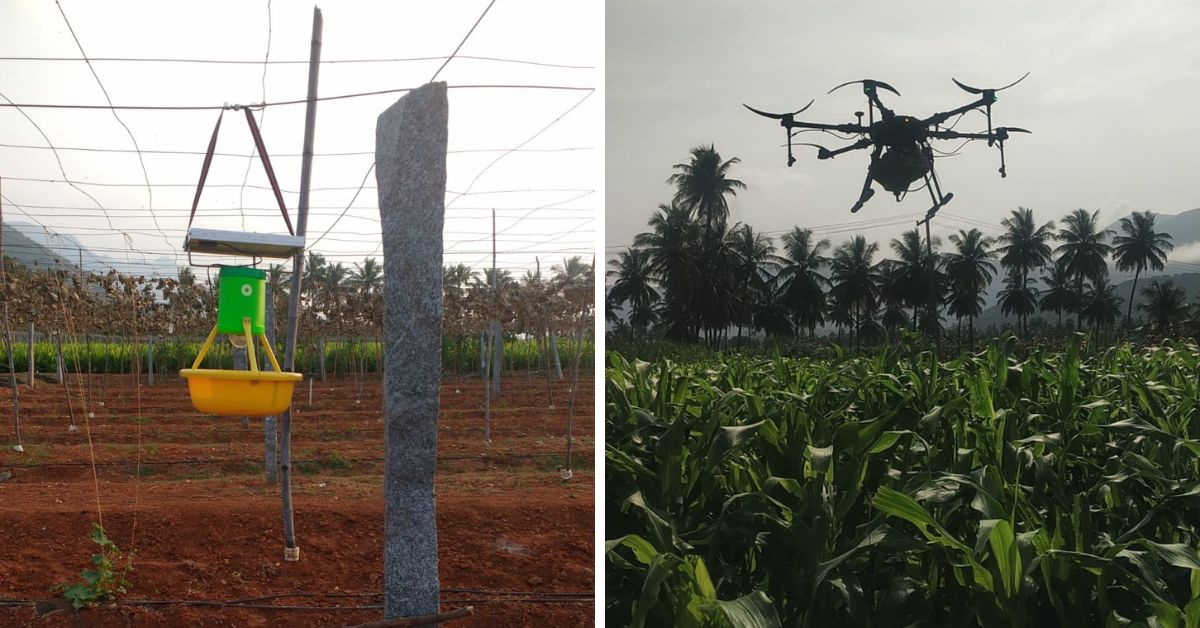
“People at the KVK suggested some biofertilisers to salvage the turmeric crop, and it worked. They also suggested that the only way to preserve the soil and prevent further damage was by moving to organic farming,” explains the 58-year-old.
Starting in 2008 in a bid to save his land, soil and crops, he slowly stopped using chemical fertilisers and pesticides. He also started practising crop rotation to ensure soil health.
“After I plant pulses, I ensure that I change the crop for the next year. I also planted nerium as a border crop to absorb pollutants and grow agathi & maize around the field as a barrier crop to prevent the entry of pests,” he says.
He also constructed a vermicompost production unit in 2008 which produces over 6 tonnes per year. He uses this vermicompost, neem cakes and castor cakes as fertilisers. He also has a biogas plant that converts the waste into energy and purifies the air.
Besides these, he utilises panchakavya (a solution made of cow’s milk, curd, ghee, cow dung and urine used as a fertiliser) spray in addition to a homemade spray containing ginger, garlic & chillies for controlling pests and disease.
While everything was going well, Saravanan found it tough to grow fodder for his cattle. Buying it from outside was expensive.
But then, in 2011, KVK Namakkal conducted a demonstration of soilless hydroponic farming for maize.
Growing maize in a cupboard

“The fodder demand was increasing and I was unable to keep up. The existing land was just not sufficient to grow fodder. While I saw the demo in 2011, it was only a few years later that I got access to the kit,” explains Saravanan,
In 2018, Aavin the dairy co-operative in Namakkal, gave a hydroponics unit to Saravanan. Hydroponics is a technique of growing plants without soil and very little water. It uses a water-based solution and produces fodder, cereals and pulses on a small scale level.
Saravanan explains that by planting 500 gm of maize, he gets 4.5-5 kg of maize fodder in a matter of 8 days.
“I keep the trays in my cupboard as we have to keep them away from sunlight. Since it grows in 8 days, I get a sufficient yield in a month. I’ve been pushing other farmers too to try hydroponics,” he adds.
The unit costs about Rs 20,000. If you found our stories insightful, informative, or even just enjoyable, we invite you to consider making a voluntary payment to support the work we do at The Better India. Your contribution helps us continue producing quality content that educates, inspires, and drives positive change. Choose one of the payment options below for your contribution- By paying for the stories you value, you directly contribute to sustaining our efforts focused on making a difference in the world. Together, let’s ensure that impactful stories continue to be told and shared, enriching lives and communities alike. Thank you for your support. Here are some frequently asked questions you might find helpful to know why you are contributing?

Saravanan explains the steps to grow maize fodder using a hydroponics unit:
- Wash and soak the grains for 24 hours.
- Tie the seeds in a gunny bag and keep it in water for 24 hours.
- Transfer the sprouted seeds to a tray and spread it out. Keep it in the cupboard.
- Water it once every three hours, either manually or using a sprinkler with a timer for 7 days.
- The yield will be ready on the 8th day.
Edited by Padmashree Pande. Picture credits: P Saravanan.
This story made me
- 97
- 121
- 89
- 167




